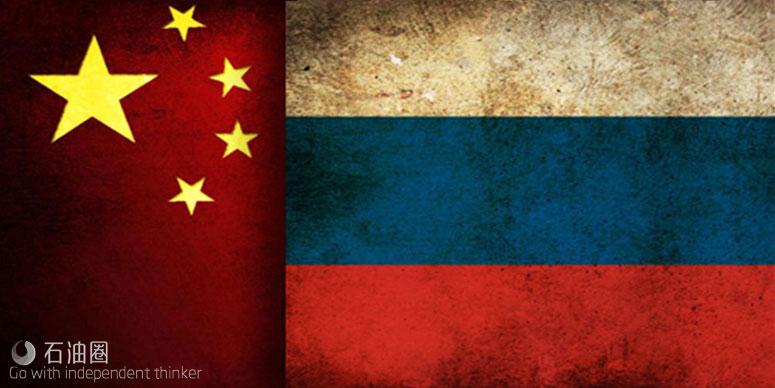What: Talks between CNPC and Gazprom have stalled amidst Beijing’s decision to review its energy supply strategy.
Why: Increasing domestic production and LNG imports may obviate the need for extra gas from Russia.
Russia and China are once more at an impasse over a new gas supply agreement, with the two sides understood to be unable to reach a compromise on gas prices relating to a proposed pipeline project connecting Western Siberia to Xinjiang.
Russia’s state-run Gazprom and state-owned China National Petroleum Corp. (CNPC) began formal negotiations on a deal encompassing the delivery of natural gas and the construction of a two-armed pipeline network in 2006, but they made little progress until 2014. At that time, the parties struck a preliminary deal after drawing up a new version of the project.
The two state companies had said initially that they would begin by building a pipeline to a small section of the Russia-China border between Mongolia and Kazakhstan and then proceed later to work on a separate pipeline serving points further east. The first link, known as the Altai or western line, was to have a throughput capacity of 30 bcm per year. The second pipe, meanwhile, was meant to pump 38 bcm per year gas from fields in Eastern Siberia and the Russian Far East.
After years of insisting that the western link had to be built first, the parties finally announced a breakthrough in the spring of 2014. Specifically, they agreed to reverse the order of the pipelines, building the eastern section first and then proceeding to the western part after that.
This move finally convinced the Chinese side to move towards a final supply agreement and to continue negotiations on the Altai route. It also allowed Gazprom to start building the eastern route, which was dubbed Power of Siberia. That part of the project is now reportedly ahead of schedule, but talks on the western route now appear to be faltering.
Russian sources close to the negotiations told Reuters last week that Gazprom and CNPC were not making any progress. The companies have been discussing proposals for the construction of the western link, as well as a pipeline from Sakhalin Island that could supply China, they said, but the talks have reached deadlock.
According to the sources, the sticking point is the Chinese government’s decision to review its future energy supply strategy. Beijing does not want to commit to the Altai pipeline or the Sakhalin route until it determines how much gas it is likely to need in the coming decades and what share of demand will be covered with LNG imports, they explained.
Under the circumstances, one source commented, the talks between CNPC and Gazprom have lost all forward momentum. “There are a lot of factors, and they [China] are not yet ready to take any decisions,” he said.
If the western pipeline project falls apart, China is unlikely to suffer much. Certainly, it would lose the 30 bcm per year of gas due to arrive along this route. But it would probably be able to source those volumes in the form of LNG from other suppliers.
BP made this point in the latest edition of its Energy Outlook publication, which covers the period ending in 2035. It said it did not believe the share of pipeline deliveries in total Chinese gas consumption would rise significantly between 2025 and 2035. Instead, it said, China will meet a larger share of its own needs with domestically produced gas and imported LNG.
BP’s head of Russia and CIS economics, Vladimir Drebentsev, spoke similarly. “We don’t see room yet for [additional] pipeline gas from Russia to China except from the already signed Power of Siberia contract [before 2035],” he told Reuters last week.
This is probably the best choice for Beijing from a logistical and financial standpoint. On the one hand, domestic gas supplies carry no customs fees and can be piped throughout the country using CNPC’s own network. On the other hand, since LNG is available on the spot market and not just under long-term contracts of the type Gazprom prefers, it offers buyers more options, more flexibility and more competition in terms of price.
Russia is not likely to submit to defeat quietly. Rather than allowing the western pipeline to fade into the background, it can be expected to continue making the case for the project for at least the next few years.
Moscow is eager to show that Gazprom can secure a foothold in a major new market outside the West, especially since the EU has yet to drop the sanctions it imposed on Russia in 2014. It also wants the company to become a player in the Chinese energy market, which has grown tremendously in recent years.
Beijing, for its part, will probably be content to buy gas from Russia if the latter offers sufficiently advantageous conditions, especially low prices. It is not clear, though, that Gazprom is willing to bend very far on this front.
Pricing has been a point of contention between the Russian company and CNPC for more than a decade. Indeed, the parties continued to discuss money matters for more than a year after the signing of the preliminary agreement in May 2014 because they were unable to resolve their differences. The most important of these was the gap between Russia’s desire to sell gas to China at a price comparable to the levels prevailing in Europe and China’s desire for cheap energy.
As noted above, the Chinese government is looking to bring its energy supply strategy into line with updated demand forecasts. Moreover, it may be doing so with an eye to emphasising domestic production and LNG imports over pipeline deliveries. If so, suppliers will have to take extra steps to attract business.
For Gazprom, these extra steps could include dropping the long-standing insistence on long-term contracts with prices linked directly to crude oil market trends. The Russian company has taken some steps in this direction in negotiations with some of its European customers, revising its pricing formulae to include links to gas spot markets as well as oil and petroleum product prices.
CNPC may not follow European companies’ lead, though, in raising objections to oil indexation. After all, it did agree to pay an oil-linked price for gas delivered via the eastern branch of Power of Siberia. But it is likely to stand firm on prices and to seek discounts.
The head of Asia oil and gas research at Nomura Holdings’ office in Hong Kong, Gordon Kwan, made this point in March. He told Bloomberg that if Gazprom truly hoped to sell more gas to China, then it “needs to be more realistic on gas pricing negotiations ahead”. Moreover, he pointed out that Beijing always had an implicit alternative to gas, noting that cheap coal was posing challenges to the government’s efforts to promote the use of clean fuels.


 石油圈
石油圈
